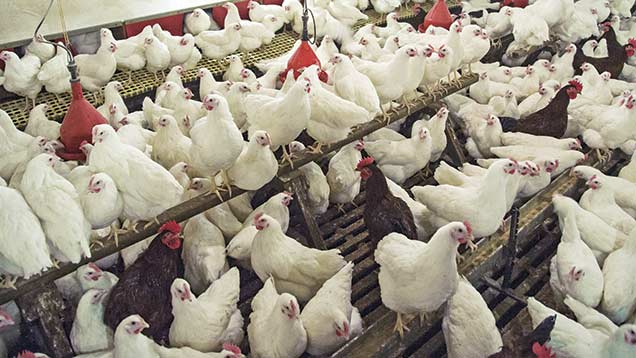How stressed parents can cause layer offspring to peck
 © FLPA/Rex Shutterstock
© FLPA/Rex Shutterstock The link between a stressed parent flock and more anxious chicks has been identified for the first time, as Jake Davies discovers on a trip to Holland
Our mothers all have an influence on our behaviour and our character – and well before things like table manners and instructions to clean behind the ears begin.
Chemical reactions in their bodies influence our make up – and it is no different in the animal world.
That’s why a consortium of researchers from Wageningen University in the Netherlands has examined, for the first time, the correlations between stress in parent stock and feather pecking in their progeny.
“Offspring of stressed birds have higher anxiety levels compared with offspring from non-stressed birds,” says Dr Bas Rodenburgh, who presented the findings to delegates at a recent Cargill Nutrition seminar. “These maternal effects may have important implications for the poultry industry, but have so far been overlooked.”
The phenomenon of parents’ anxiety and fearfulness passing on to progeny is known as a “predictive adaptive response”. It is so that an animal’s young are more likely to be prepared for a dangerous world, if unfortunate enough to be born into one.
With birds, inheriting such a temperament is thought to be via the transfer of hormones through the yolk. But stress can also be an influence on layer bodyweight, having a trickle-down effect on later chick development.
The study
Researchers looked at 20-bird samples from 10 parent flocks – half ISA Brown and half Dekalb White. Birds with a white ancestor origin are generally understood to be more anxious than those of a brown heritage.
Each hen had blood taken, to analyse the levels of hormones associated with stress, and feather cover was assessed. The eggs from these flocks were then traced into rearing, and subjected to a range of tests to determine their own anxiety and likelihood of developing a pecking outbreak.
Four sets of examinations were made on the chicks at one, five, 10 and 15 weeks of age, and it was discovered that parents had an influence on severe feather pecking in the first week. Anxiety-related tests showed a parental influence on chicks in weeks one and five.
The correlation was only found in the white birds, with the brown more prone to feather peck when litter is disturbed. Researchers concluded that, in this study at least, genetics have a larger role to play in the white layers, while brown birds are more influenced by their environment.
Keel bone damage
A growing concern for the egg industry is the damage to keel bones that can be caused when pullets are first exploring multi-tier units.
Aerial perches are considered a key requirement for allowing hens to express natural behaviour, but missing the mark can lead to fracturing of the keel bone, found between the breast meat of birds.
Small-scale studies have suggested this may be a painful experience for the bird, and work is under way to find ways of mitigating the damage.
A Bristol University study has suggested 86% of birds in free-range systems may have damaged the keel bone in the course of their life, as shown by healed fracture marks on the bones of older layers.
Similar issues can be caused in caged housing, as well. As birds get older, osteoporosis can weaken the bones, and this weakness can cause damage to the keel bone. This presents in autopsies as a deviation in the bone, rather than a healed fracture.
As part of his presentation, Dr Rodenburg gave an overview of four recent studies that recommended ways keel bone damage may be mitigated in non-cage farming systems.
- Coating perches in a softer material, to dampen the impact of colliding with perches
- Swinging perches – considered a way to both reduce the impact of hitting a perch, and may teach young birds how to land more accurately
- Providing more equipment in the twilight hours, as this is when the majority of accidents have been found to happen
- Wing-assisted incline running – providing an extremely steep ramp that birds have to flap to ascend. This is a known way to improve body condition in other species. It may be that installations in barn-units have a similar impact.
